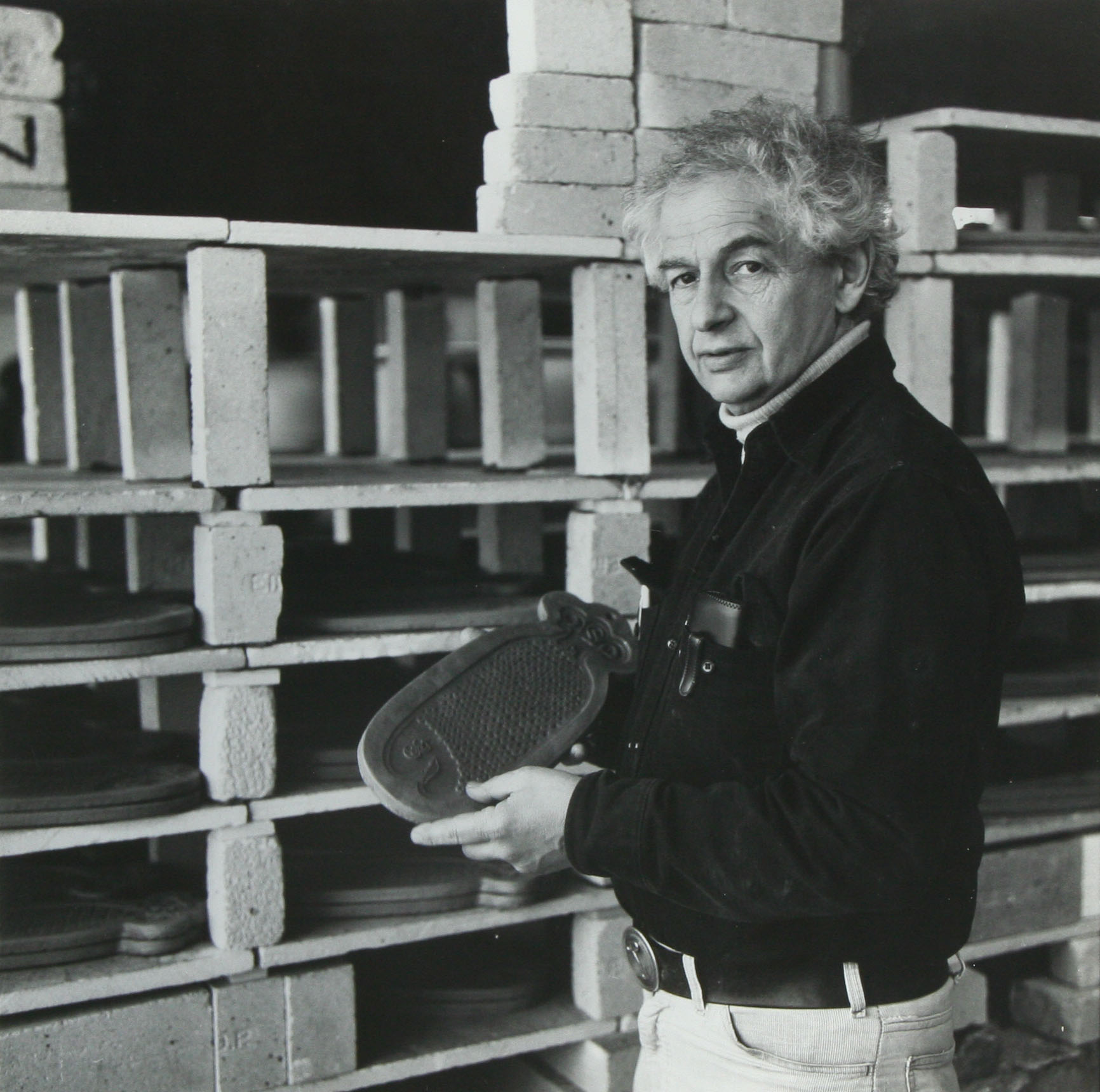
“‘Bennington'” as the Warner Collector’s Guide to North American Pottery and Porcelain notes, “refers not to a specific company but a town in Vermont that is well-known for the pottery made by a number of firms.” While the authors of the guide had nineteenth-century makers of Rockingham-glazed yellowware and parian in mind, that entry may now be updated to include David Gil, who arrived in 1948, and his Bennington Potters, Inc. (originally named Cooperative Design, Bennington, Vermont), which is still active today.
“Upon his arrival Gil was unaware of Bennington’s 19th-century pottery,” explains Bennington Museum curator Jaime Franklin. “He soon became well acquainted with it, as the museum already had a stellar collection and there were many collectors in the area, including Elizabeth McCullough Johnson, the sister of Jane McCullough Thompson, founding editor of Industrial Design magazine and a friend of the Gils.” In the 1970s and 1980s, Gil made reproductions of some earlier Bennington Rockingham pieces, but by that time he was already distinguishing himself as a designer with an ability to fuse contemporary forms with historic references. The current exhibition, Tradition, Innovation and Good Design: The Ceramics of David Gil, on view through May 17 at the Bennington Museum features works made in the 1950s, 1960s, and 1970s—the first half of his career. The selection of plaques, figures, vases, and tableware range from classically modern to decidedly mod with a few historic notes mixed in.
Among studio potters, Gil stands out as a production potter. Fresh from Alfred University’s respected clay program, then directed by Charles Harder a champion of design for industrial manufacture, Gil started his operation on a modest scale in one of Bennington’s old barns. Although he valued handcraft and high aesthetic standards, he also embraced mechanization, including a ram press and tunnel kiln.
As the enterprise grew, Gil intrduced hundreds of forms and glazes. His functional vessels received notice in several prominent exhibitions, most significantly the Ceramics Nationals organized by the Everson Museum of Art in Syracuse and the “Good Design” exhibitions organized by the Museum of Modern Art and the Chicago Merchandise Mart. More than half a century later, the smart shapes of a milk-white, pin-striped decanter or sake set still look appealingly modern. The biomorphic bird vase, asterisk vase, and “eye-dropper vase” also fit into this category.
Other forms were directly aimed at the commercial market. In 1953, Gil introduced the now familiar “Trigger” mug with its double-loop handle and it became an instant best seller. He showed a sense of humor early on in his market wares, according to Franklin, “creating whimsical decorative work including Mr. Salt and Mrs. Pepper and Glad n’ Sad Cruet.”
The exhibition also affords a rare opportunity to view several “art” pieces, created through a one-time collaboration with such artists as the sculptor David Smith, artist Leonard Baskin, and painter Cleve Gray. These were part of a project sponsored by Art in America in 1964 that went on a national tour arranged by the American Federation of Arts.
David Gil died in 2002 but his Bennington Potters continues Bennington’s ceramic industry.
